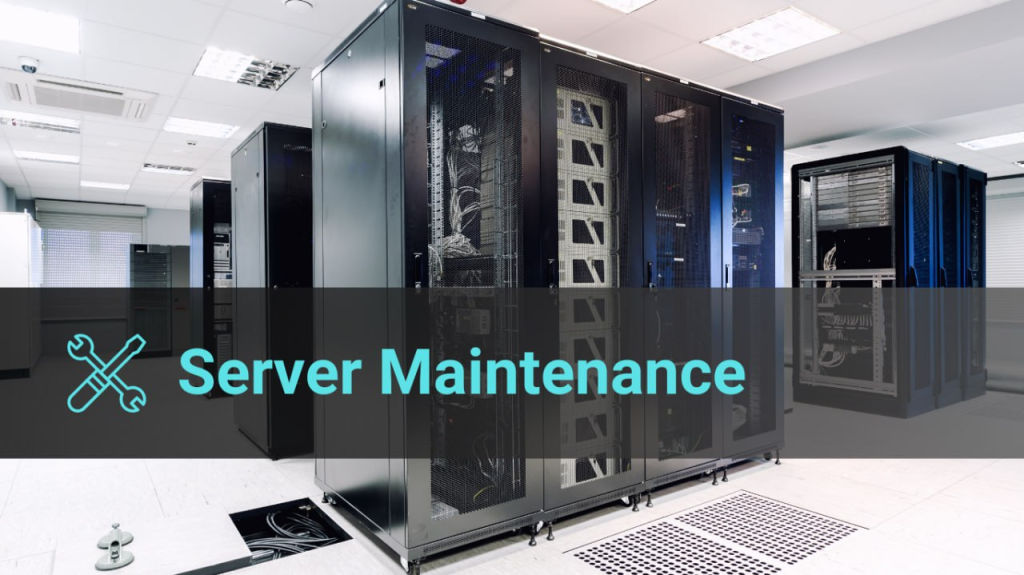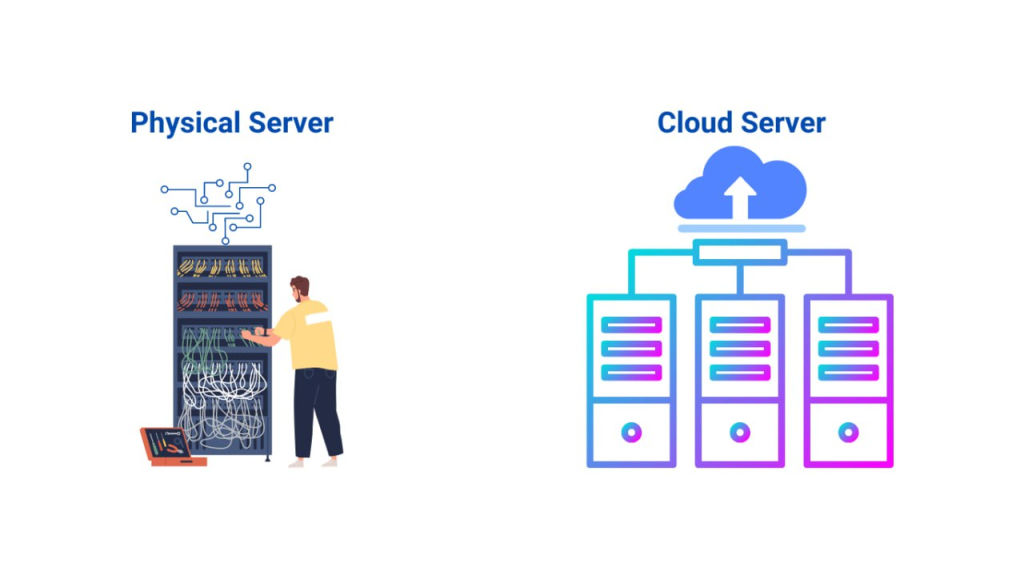Servers form the backbone of daily business operations in today’s digitally driven world. But like any equipment, servers require regular maintenance and care for optimal performance. A server maintenance plan outlines schedules and procedures for preventative upkeep and servicing of these mission-critical systems.
This comprehensive guide will demystify server maintenance plans and emphasize their importance. We will cover:
- Server basics and their role in business processes
- What server maintenance entails
- Reasons maintenance is indispensable
- Components of effective maintenance plans
- Physical vs virtual server considerations
- Approaches like in-house vs outsourced support
- Choosing plans tailored to your infrastructure
- Real-world consequences of proper server maintenance
A maintenance plan translates to long-term savings, sustained uptime, and avoiding operational disasters. Read on to learn how protecting your server investment should be a top priority!
Table of Contents
What are Servers and Their Role?

Servers are powerful dedicated computers that provide services and manage resources for other systems and users over a network. They enable:
- Hosting websites and web apps accessible over the internet
- Storing, managing and sharing files and databases
- Running critical business applications accessed by employees
- Email, print and communication services
- Hosting virtual desktops and virtual private networks (VPNs)
Some examples of common server types:
- Web servers like Apache and IIS that host and deliver web content
- File servers for central file access and storage like FreeNAS and Windows Server
- Database servers like MySQL and Microsoft SQL Server for structured data
- Application servers like JBoss and WebSphere that run custom business apps
- Communications servers like Microsoft Exchange for email and collaboration
- Virtualization servers like VMware that create virtual machines
Servers ensure various aspects of an organization’s technology infrastructure work together seamlessly. They tie together users, software, data and devices into a cohesive digital ecosystem. With most business dealings now online, properly maintained modern servers are indispensable.
What is Server Maintenance?

Server maintenance involves regularly servicing and checking physical and software-related aspects of servers to keep them functioning optimally. Standard maintenance tasks include:
Hardware Upkeep
- Cleaning: Removing dust, debris that causes overheating
- Inspecting connections: Checking cables, ports for defects
- Monitoring temperatures: Ensuring adequate cooling and ventilation
- Testing backup batteries and power supplies: Critical for uptime
- Replacing deteriorating components: Hard drives, fans when nearing end of service life
- Upgrading equipment: More RAM, faster processors for better performance
Software Maintenance

- Patching and updating operating systems: Fixing bugs, security holes
- Managing applications: Updates, configuration, troubleshooting issues
- Optimizing performance: Hard drive defragmentation, stopping unused services
- Backup management: Testing recovery, ensuring completeness
Good maintenance applies preventative measures proactively vs reacting to problems after-the-fact. Planned procedures also minimize maintenance downtime through streamlining needed upkeep. Consistent care prolongs server lifespan and reliability.
Why Server Maintenance is Critical

Businesses cannot afford to neglect server maintenance given how much daily operations rely on these systems functioning smoothly. Benefits of proper maintenance include:
Maximum Uptime and Availability
Preventative care minimizes downtime from unexpected failures. Quick repairs also restore servers rapidly when issues do arise. Together this ensures 24/7 access and 99%+ uptime.
Improved Performance and Responsiveness
Proactive tasks like cleaning, patching, upgrades keep servers running at optimal speeds. Users enjoy snappy response times from well-maintained systems.
Bolstered Security
Regular patching and hardening servers resolves vulnerabilities that attackers exploit. Prompt incident response also limits damage from threats.
Cost Savings
Early diagnosis of deteriorating hardware avoids costly failures down the line. Smooth operations prevent wasteful business disruptions. Maintenance is cheaper than emergency recovery.
Extended Server Lifespan
Careful ongoing maintenance allows delaying large reinvestments in new servers. Well-maintained servers remain functional for years through gradual upgrades.
Enhanced Compliance and Audit Readiness
Documented maintenance provides due diligence reports for industry regulations and compliance standards. This smoothens audits.
Preventing problems through planned maintenance schedules is much easier than reactive troubleshooting under pressure. Protecting server availability and performance is essential.
Server Maintenance Plans Explained
A server maintenance plan outlines a schedule and assigned responsibilities for routine servicing tasks that keep servers running optimally. Key elements include:
Preventative Procedures
Checklists detail step-by-step maintenance procedures for IT staff like hard drive wiping, ventilation cleaning, backup integrity checks etc.
Scheduled Frequencies
Calendars define daily, weekly, monthly and quarterly maintenance tasks for predictable upkeep. Major vs minor task timelines help planning.
Maintenance Window Designation
Periods of permitted system downtime for maintenance are marked in calendars. This enables completing tasks with minimal downtime impact.
Role and Responsibility documentation
Persons responsible for executing or overseeing specific maintenance procedures are defined for accountability.
Standard Operating Procedures
SOPs instruct proper performance of complex maintenance tasks like hardware installations, disaster recovery rehearsals etc.
Replacement/Upgrade Planning
Roadmaps for replacing aging components or future capability upgrades help proactive budgeting.
Documentation and Reporting
Maintenance logs record work done, parts replaced, and issues for tracking. Key compliance reports are generated.
Proactive maintenance plans shift focus from reactive firefighting to consistent care ensuring steady server health. They bring order and mindfulness to essential administration.
Key Elements of an Effective Plan
Robust server maintenance plans should include:
Scheduled Software Updates
Routinely checking and installing operating system, firmware, and software patches/updates maintains performance and plugs security holes.
Regular Hardware Inspections
Detecting failing hardware early on through systematic inspections, diagnostics, and monitoring tools allows timely replacement avoiding disruption.
Consistent Data Backups
Daily backups with periodic offsite archiving protects against data loss. Test restores validate recovery readiness.
Backup Power Testing
Electrical issues can disrupt systems. Testing uninterrupted power supply (UPS) and generators ensures availability.
Proactive Monitoring
Real-time centralized monitoring tools track server health statistics enabling preventing many problems before they occur.
Capacity Planning
As usage grows, additional server resources may be needed. Monitoring utilization patterns helps forecast capacity expansion requirements.
Comprehensive Disaster Recovery
Detailed plans for reliably restoring servers using backups quickly after catastrophic failure helps continuous operations.
A combination of sound strategies spanning hardware, software, data, and electrical systems are vital for holistic server maintenance. No single point of failure should cripple overall availability.
Physical vs Virtual Server Maintenance

Physical servers require careful maintenance of host machine environmental conditions and components:
- Controlled temperature/humidity and dust-free server room space
- Strong physical access controls to server area
- Testing of fire/water damage prevention systems
- Checking server physical chassis, cabling, interface card conditions
- Hardware diagnosis and repair procedures
In contrast, virtual servers exist as virtual machine software emulated by a hypervisor on a physical host. Maintenance aspects unique to virtual servers include:
- Host server maintenance to provide robust VM underpinnings
- Hypervisor patching for maximum performance and security
- Managing virtual disk files and storage allocation
- Reallocating VM resources like vCPUs, RAM etc. as needed
- Maintaining virtual network configuration
- Backing up VM files or entire virtual disks
- Testing VM failover across hosts for resilience
- VM performance monitoring independent of hosts
While physical maintenance remains critical even with virtualization, working at the VM level allows non-disruptive server maintenance through VM migration.
In-House vs Outsourced Maintenance

Organizations have two options for maintenance:
In-house IT Team
- Pros: Total control, custom procedures, leverages intimate system knowledge, tight security.
- Cons: Staffing overhead, struggles with complex tasks, upgrade delays.
Outsourced IT Services Provider
- Pros: Predictable costs, flexible expert staffing, speed, 24/7 coverage, advanced tooling.
- Cons: Potential lack of context, reliance on contractor diligence.
A hybrid model is effective for many
Leverage external provider for:
- 24/7 monitoring and urgent issue resolution
- Complex tasks like upgrades, security hardening
- New technology implementation
- Periodic deep cleaning and maintenance
Retain in-house staff for:
- Ongoing daily maintenance
- Resolution of minor issues and requests
- Managing backups and restorations
- Business continuity planning
- Vendor management
Strike the right balance between control, cost, and convenience when designing maintenance models.
Choosing the Ideal Plan
Consider these aspects when selecting a server maintenance plan:
Company Size
Larger organizations need extensive vendor SLAs, detailed reporting, and infrastructure scale. Smaller firms can opt for targeted cost-effective plans.
Server Workload
Heavily loaded servers require more frequent maintenance while lightly used servers need less. Balance costs accordingly.
Budget
Optimize plan to match maintenance budgets. More procedures or 24/7 coverage increase costs but reduce risks.
On-Site Service Requirements
Having on-demand on-site support reduces downtime but costs more. Remote-only plans suffice for software-related maintenance and minor issues.
Vendor Credibility and Expertise
Validate vendor reputation, experience, technician competence, and customer satisfaction before outsourcing maintenance.
Main Business Systems Supported
Prioritize maintenance for servers running core apps like email. Backup servers may need lower response times.
Coverage Hours
24/7 support costs more but may be justified for always-on critical systems. Define suitable response times.
A well-designed maintenance plan aligns server upkeep with capability and budget. Reassess plans yearly as workloads evolve.
Conclusion
Regular comprehensive server maintenance is no longer optional for modern digitally reliant organizations – it is a strategic imperative for avoiding disastrous interruptions and delivering business excellence.
FAQs
A server maintenance checklist is a list of routine admin tasks like patching, hardware checks, performance tuning, backup verification, security hardening etc. that are executed at daily, weekly, monthly frequencies to maintain optimal server health.
Daily maintenance involves brief checks and cleaning. In-depth weekly/monthly tasks like updates, backups, integrity checks provide robust upkeep. Quarterly and annual maintenance activities like replacing hardware components, OS upgrades, and disaster recovery drills ensure maximum reliability.
Patching and hardening servers while promptly fixing issues improves resilience to attacks. Maintenance reduces vulnerabilities.
Patching and hardening servers while promptly fixing issues improves resilience to attacks. Maintenance reduces vulnerabilities.
Frequent downtime, slowness, crashes, hardware warnings, user complaints, and security alerts all warrant immediate maintenance.

